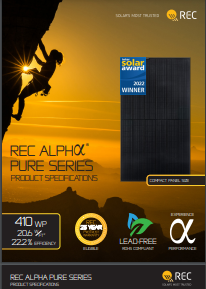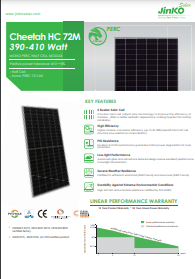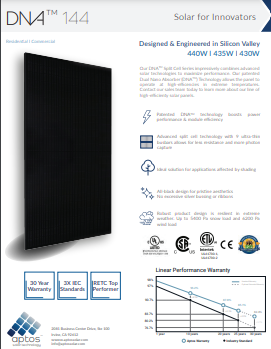Solar Equipment Options
You Have Options!
If you’re new to solar, understanding your equipment options can be confusing. It’s often difficult to know if you’re getting a good price and reliable equipment. But don’t worry - working with Solar150 makes the project easier. We’ll educate you on the different equipment options and help ensure you’re matched with the best vendor and equipment for your needs.
In this section, you can learn about solar panels, solar inverters, optimizers, and batteries. You can learn what equipment you need and what is optional. You’ll also see how these options differ in terms of cost, system efficiency, and break-even timelines.
Solar Panel Options
A great way to become familiar with the different types solar panels, as well as their advantages is to review the spec sheets. Below are links to the spec sheets of multiple, top quality solar panels. Solar150 will help you through the process and help match the best equipment to your solar project.
Inverter Options
An inverter is one of the most important pieces of equipment in a solar energy system. It’s a device that converts DC electricity generated by solar panels into AC electricity, which is used in the home. There are three different options when it comes to solar inverters, and each has its advantages and disadvantages:
String Inverters
Advantages
- Easy Installation and Troubleshooting: The main advantage of string inverters is that you only need one of them (possibly more for very large PV systems) which makes installation and troubleshooting easy.
- Cost: Installing a single inverter is faster and less expensive in terms of equipment and labor, which makes string inverters the most affordable option.
- Simplicity: Fewer parts and components mean installations with string inverters are not very complicated.
Disadvantages
- Poor performance in shade: String inverters have (at most) one single Maximum Power Point Tracker (MPPT) per string. This means when a single module in a string is shaded, the entire string operates at the same output current as the lowest current in the string. Simply put, if shade is an issue, then power production will be worse with string inverters compared to power optimizers and microinverters.
- Minimum String Length: Each MPPT has a minimum voltage required to operate, which means that strings must typically be made up of five or more modules.
- Orientation Matching: It takes a minimum number of modules to meet the minimum voltage for an MPPT, so each module in a string must match the same orientation, pitch, and azimuth which restricts system design.
- Compliance Challenges: String inverters lack an elegant “rapid shutdown” mechanism which makes compliance with the National Electric Code an added challenge.
String Inverters + Power Optimizers
Advantages
- Optimizers control each module’s production while utilizing low-cost string inverters. Optimizers offer resilience to partial shade, unrestricted from orientation matching, and easier compliance with Rapid Shutdown. It is also possible to over-size systems to produce more power during low-light situations without affecting normal inverter operation. SolarEdge is a world leader offering Inverter + Optimizer solutions.
Disadvantages
- Similar to microinverters, power optimizers increase initial costs and create more possibilities for failure leading to higher replacement costs and maintenance for a greater number of devices. However, these costs are often justified by greater performance, especially when there are challenges in installation and concerns about shade.
Micro-Inverters
Advantages
- The primary advantage of microinverters is that the failure of a single microinverter or panel does not impact the production of the rest of the system. Like power optimizers, microinverters are more resilient to shade, unrestricted from orientation matching, and compliant with Rapid Shutdown. System expansion is easy with microinverters, and they often have longer warranties than string inverters. Enphase is an industry-leading microinverter solution.
Disadvantages
- Microinverters typically require higher initial costs, which is justified in many cases where there are technical challenges or shade that could reduce performance. Microinverters require multiple units (one inverter for each panel) and therefore may result in higher costs for replacing failed inverters. Microinverters also require an additional device for monitoring.
Battery Options
Franklin Storage, Solar Edge, Enphase, and Tesla Power Wall
What is Solar + Storage and what does it do?
Solar + Storage is a combination of solar panels and an energy storage system that allows customers to store electricity from their solar system so they can use it whenever it is needed. In general, energy storage refers to batteries, or a battery backup system, that provides a power source even during a power outage when the grid goes down.
Why do customers need Solar + Storage?
There are a number of benefits that homeowners receive from installing energy storage solutions, but the primary benefit is energy independence. Solar + Storage protects homeowners from grid outages, saves money from rising rates and dynamic utility rate structures, and offers a level of control and energy independence that is only possible with both solar and storage.






